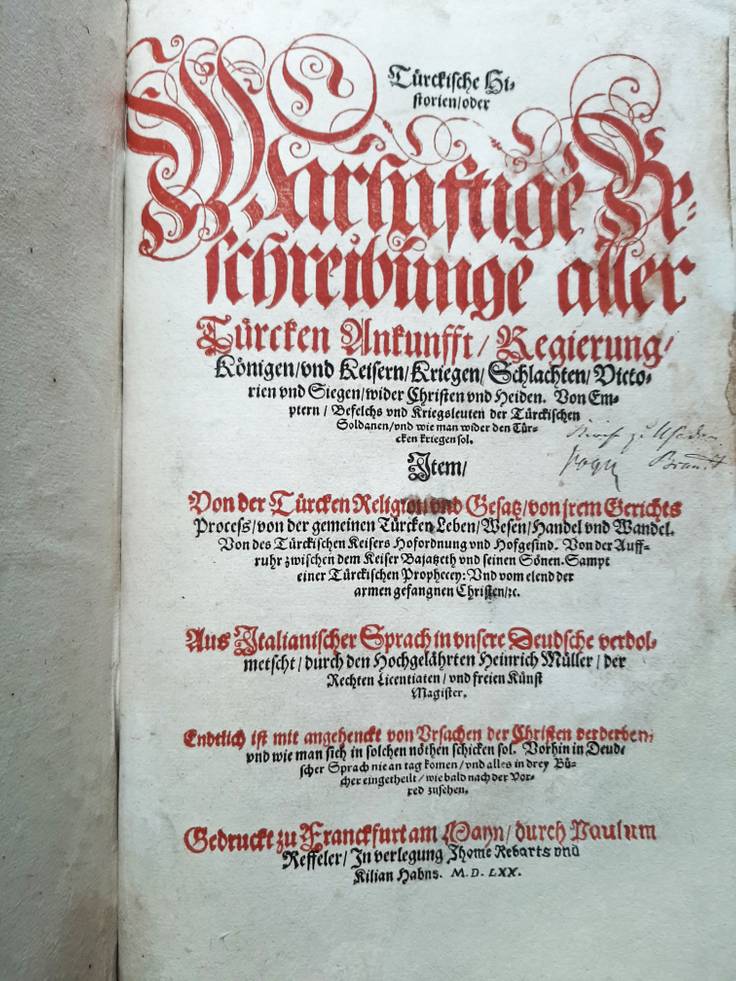GIONANNI ANTONIO MENAVINO (1492-1514) and SIGMUND VON HERBERSTEIN (1486-1566)
Lot 199
7 0009 000
Türckische Historien,1570 & Moscoviter wunderbare Historien, 1567.
Menavino Giovanni Antonio (1492-after 1514)
Türckische Historien, oder warhaftige Beschreibunge aller
Türken Ankunfft, Regierung, Königen, und Keisern, Kriegen,
Schlachten, Victorien und Siegen, wider Christen und Heiden…
Aus Italianischer Sprach in unsere Deudsche verdolmetscht,
durch den Hochgelährten Heinrich Müller. Frankfurt: [Thomas
Rebarts and Kilian Hahns, 1570]. Second edition in German,
general title printed in red and black, 2 part titles both dated
1563, part 1with 12 woodcut medallion portraits in the text.
Herberstein Sigmund Von (1486-1566)
Moscoviter wunderbare Historien: in welcher deß treffenlichen
grossen land Reüssen, sampt der Hauptstatt Moscauw
… religion, und seltzame gebreüch: auch deß erschrockenlichen
großfürsten zu Moscauw härkommen, mannlicher
haten … auff das fleyßigest ordentlichen begriffen… Basel:
heirs of Niclauß Brillinger and Marc Russinger, 1567.
Two rare 16th-century German-language descriptions of Turkey
and Russia, containing important maps and illustrations. Second
edition in German, translated by Heinrich Pantaleon, woodcut
device on title with full-page woodcut portrait on verso, 2
double-page woodcut maps of Muscovy, double-page woodcut
plan of Moscow, 6 woodcut illustrations in the text (complete,
without the folding portrait of Ivan Vasilievich which was found
in a single copy sold at auction in 1991 and is not described in
any of the copies held institutionally).
2 volumes in one, 31,7x20 cm. Contemporary German blindstamped
pigskin, spine in 5 compartments with raised bands
(worn, lacking brass cornerpieces, clasps defective, small splits
at head- and tail of spine at upper joint, top and bottom raised
bands rubbed and slightly defective, small hole in central spine
compartment).
‘[Menavino’s] work is one of the most important contemporary
descriptions of Turkish life, of particular interest because Menavino
himself spent ten years in the Seraglio as an “içoglan” or
page of the Sultan. At the age of 12 he had been captured by
pirates and presented as a gift to the Sultan. He was enrolled
among the tribute-children and in his book describes their education
in detail and speaks with authority of the inner life of the
great palace’ (Blackmer).
The maps and plans in the second-bound work by Sigmund von
Herberstein provided the basis for many subsequent maps of the
region, for example the Braun and Hogenberg plan of Moscow
in their Civitates series.






